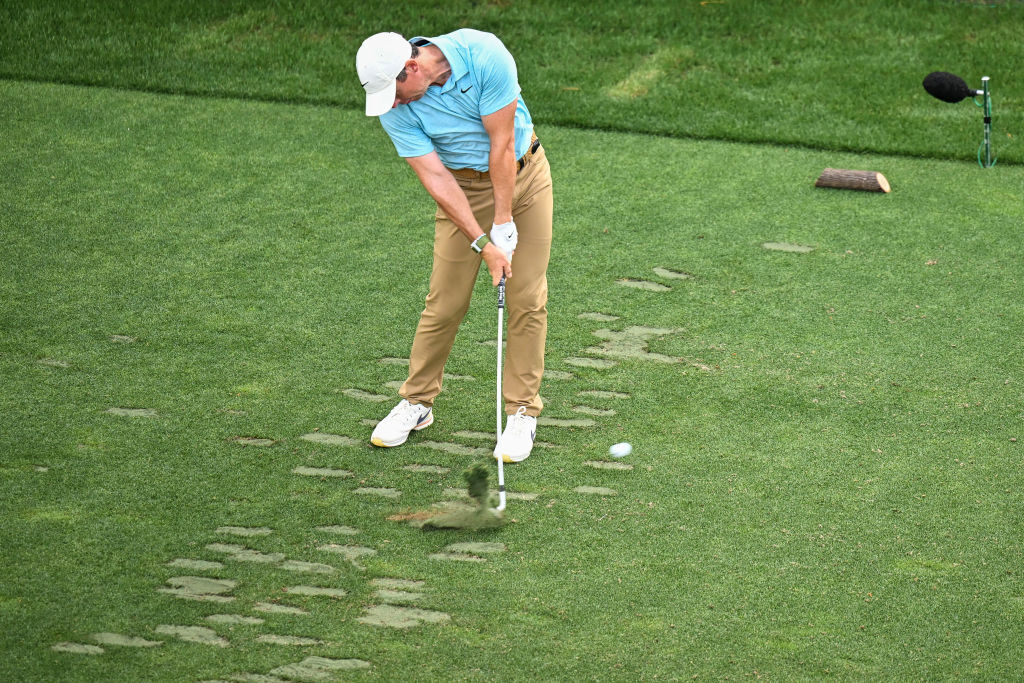How to Stop Early Extension in Golf and Gain Consistency
Early extension in golf causes inconsistency. Here's exactly what it is, and how to stop it.

Early extension is a widespread swing flaw. In fact, early extension is probably one of the biggest differences between your golf swing, and a professional’s, and it can lead to all sorts of inconsistent shots.
So what exactly is early extension in the golf swing, and more importantly, how do you fix it?
Golf Magazine Top 100 Teacher Gary Gilchrist demonstrates an easy drill that you can do – with or without a ball – to help eliminate early extension from your golf swing.
How to Stop Early Extension in Golf
One of the best ways to stop early extension in your golf swing is to practice hitting balls on a downhill lie. When you set up to the ball from a downhill lie, your lead shoulder is low and your trail shoulder is high. Throughout the takeaway and backswing, you’ll naturally keep the club more in front of you.
When you start the downswing, your lead shoulder stays low. The opposite of this move is classic early extension. When, instead of going low, your lead shoulder (left shoulder for a right-handed golfer) goes up, the club drops behind you, leading to blocks and hooks.
When your lead shoulder stays low and your weight moves into the lead side during the downswing and into impact, the club can exit to the left (for a right-handed player) which will help you hit straighter shots with no early extension.
If you don’t have a downslope on your driving range – after all, most driving ranges are designed to be flat – don’t worry. You can use a slope anywhere and make practice swings honing this move to eliminate early extension.
Another drill you can use to stop early extension in your golf swing is the chair or wall drill, which you can easily do from your home or office.
- First, without a club, get into your golf posture, with your butt lightly resting against a wall or a chair.
- Then go through your swing in slow motion, making sure to keep the connection between your butt and the wall or chair throughout the swing.
- Notice how it feels to keep your posture throughout the swing, then try to replicate that feeling the next time you swing a club.
What is Early Extension in Golf?
According to MyTPI.com, 70% of golfers have early extension in their swing, but 99% of professionals don’t.
Early extension in golf happens when, at any point during the swing, you thrust your pelvis toward the golf ball. Early extension is most common during the downswing, when you’re going after the ball, although it can occur in the backswing as well.
Think of extension simply as standing up out of your golf posture. Every golf swing has extension, the problem is when you early extend out of your posture before impact.
How to Identify Early Extension
The good news is that it’s easy to identify early extension in your swing.
Film your swing from the down-the-line angle. From the address position, draw a line perpendicular to the ground from your butt to the ground. If your butt moves off of that line during your swing before impact, creating a gap between the line and your butt, that’s early extension. If your butt stays on the line from address to impact, then there’s no early extension in your swing.
It’s important to note that early extension can be caused by physical limitations in your hips, pelvis, rib cage, or abs.
Say Goodbye to Early Extension
Building a swing that’s free of early extension can pay huge dividends. We all know how hard it can be to make good, clean contact consistently. If you have early extension in your swing, you’re only making it harder on yourself to strike the ball well.
When you stop early extending in your swing, you’ll notice more consistent ball striking and you’ll find that it’s a lot easier to hit the sweet spot time after time.